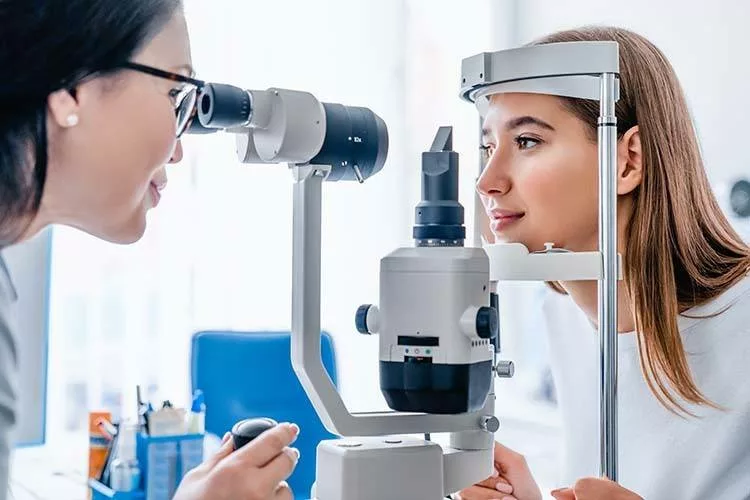Locate a Trusted Optometrist Chino for Household Eye Treatment Solutions
Locate a Trusted Optometrist Chino for Household Eye Treatment Solutions
Blog Article
Checking Out the most up to date Technological Improvements in Optometry and What They Mean for Eye Doctors
In the ever-evolving field of optometry, current technological developments are reshaping just how specialists come close to eye care. From the precision of Optical Coherence Tomography to the nuanced insights used by AI-driven diagnostic devices, these developments are setting new criteria in patient analysis and treatment. Teleoptometry is poised to redefine ease of access, making certain that know-how goes beyond geographical limitations. As these developments permeate the technique, eye doctors are faced with the challenge of accepting these devices to improve client end results. Yet, the concern continues to be: just how will these technological changes redefine the roles and obligations within the career?
Developments in Diagnostic Equipment
Progressing the area of optometry, developments in diagnostic devices have transformed the way eye care specialists assess and detect ocular conditions and visual disabilities. The previous decade has experienced significant technological innovations, making it possible for even more comprehensive and exact analyses.
Another key technology is the introduction of sophisticated corneal topography systems, which map the surface area curvature of the cornea with precision. These devices are particularly beneficial for fitting get in touch with lenses and detecting corneal disorders. Digital retinal imaging has transformed conventional ophthalmoscopy, offering thorough, scenic sights of the retina that facilitate comprehensive visual evaluations.
The advancement of wavefront aberrometry has actually additionally been critical, enabling the evaluation of refractive mistakes with unmatched accuracy (Eye Doctor). This technology helps in tailoring corrective lenses and boosting surgical outcomes for refractive surgical procedures. Jointly, these diagnostic improvements encourage eye doctors to supply remarkable individual care, ensuring early intervention and tailored therapy techniques, ultimately improving visual health and wellness results
AI in Person Management
Structure on the structure of advanced analysis tools, the incorporation of fabricated knowledge (AI) in client management represents a transformative leap for optometry. AI systems are increasingly employed to enhance effectiveness, precision, and personalization in patient care.
Furthermore, AI-driven platforms assist in streamlined patient communications and administrative processes. Automated organizing, virtual examinations, and customized follow-up strategies not only improve client complete satisfaction however likewise enhance time administration for practitioners. These systems can triage individuals based upon the urgency of their problems, ensuring that those in critical need obtain prompt attention.
Furthermore, AI improves decision-making by offering optometrists with evidence-based recommendations and treatment pathways. By incorporating information from electronic health records, AI tools provide understandings that educate professional decisions, lowering the risk of mistakes and boosting person end results. As AI remains to advance, its role in client administration will likely increase, improving the landscape of optometric treatment.
Advances in Retinal Imaging
In the world of optometry, retinal imaging has actually seen amazing technological developments that are enhancing analysis abilities and patient treatment. Technologies such as Optical Comprehensibility Tomography (OCT) and fundus digital photography have changed how optometrists examine the retina and envision.
Enhanced imaging modalities like OCT angiography are more refining diagnostic accuracy. This non-invasive technique maps blood flow in the retina, offering vital insights into vascular wellness without the need for color injections. In addition, flexible optics innovation is being incorporated right into retinal imaging systems to correct eye aberrations, delivering extraordinary picture clearness. Such developments assist in the identification of minute retinal changes that can symbolize illness development.
Additionally, developments in man-made knowledge are boosting retinal my link imaging by allowing automatic evaluation of large datasets. These systems aid eye doctors in identifying patterns a sign of pathology, thereby enhancing analysis accuracy and effectiveness. Jointly, these innovations are changing retinal imaging into a cornerstone of contemporary eye treatment, enhancing results and broadening therapeutic opportunities.
Teleoptometry's Growing Duty
Teleoptometry is significantly coming to be an essential component of eye treatment, driven by advancements in electronic communication and diagnostic tools. As optometry welcomes electronic change, teleoptometry helps with remote consultations, enabling eye doctors to extend their services past traditional boundaries. This is especially helpful in country and underserved locations where accessibility to specialized eye treatment is usually restricted. By leveraging high-resolution video clip conferencing and advanced retinal imaging, see post eye doctors can perform extensive eye exams from afar, making sure timely medical diagnosis and treatment.
The combination of artificial knowledge (AI) further enhances teleoptometry, enabling the analysis of visual data and helping in the discovery of ocular problems such as glaucoma and diabetic person retinopathy. AI-powered formulas can rapidly translate complicated imaging information, supplying optometrists with beneficial insights that strengthen clinical decision-making.
Furthermore, teleoptometry sustains connection of care through smooth integration with electronic wellness records (EHRs), allowing eye doctors to preserve thorough client backgrounds. When consulting with different practitioners., this ensures that people get individualized and consistent treatment even.
Despite these advantages, challenges remain, consisting of making certain data protection and taking care of client assumptions. Teleoptometry represents a considerable stride in the direction of even more accessible, reliable, and patient-centered eye treatment. As modern technology develops, its duty is positioned to increase further.

Future Trends in Eye Care
A myriad of ingenious fads is set to reshape the future of eye treatment, driven by technical advancements and the progressing needs of patients. One significant pattern is the assimilation of expert system (AI) in diagnostics, which promises to improve the precision and effectiveness of eye assessments. AI algorithms can analyze large quantities of data from retinal images, possibly spotting problems like diabetic person retinopathy and glaucoma earlier than typical techniques.
Additionally, tailored medication is getting grip in optometry, with genetic screening informing customized treatment plans. This strategy aims to enhance individual results by customizing treatments to individual hereditary accounts. Wearable modern technology, such as smart call lenses, is additionally imminent, supplying real-time monitoring of intraocular stress or sugar degrees, hence offering continual understandings into systemic and ocular health and wellness.
The adoption of enhanced truth (AR) and online truth (VIRTUAL REALITY) in training and client education and learning is another arising fad. These innovations offer immersive experiences that can boost understanding and abilities both for optometrists and patients. As these trends develop, eye doctors should stay abreast of technical developments to give innovative treatment, guaranteeing better client end results and fulfillment Read Full Article in the vibrant landscape of eye care.
Conclusion

Collectively, these analysis innovations equip optometrists to provide exceptional person care, making certain early treatment and customized treatment strategies, ultimately enhancing aesthetic health and wellness outcomes.
As these technologies proceed to progress, eye doctors have to adjust and incorporate them right into method, ultimately enhancing operations performance and boosting the requirement of eye care supplied to clients.
Report this page